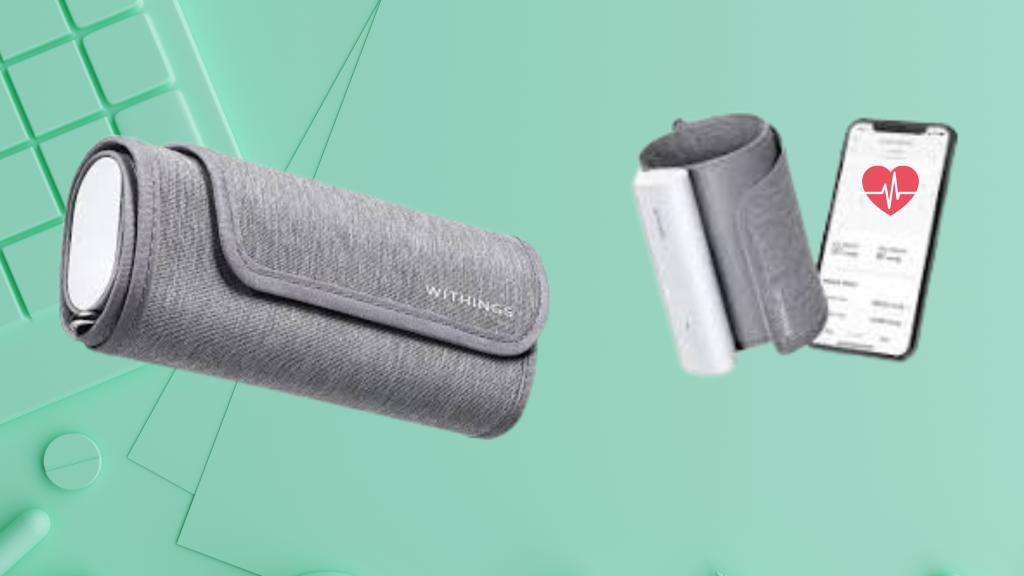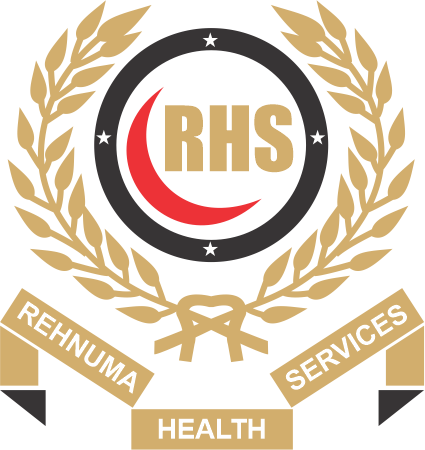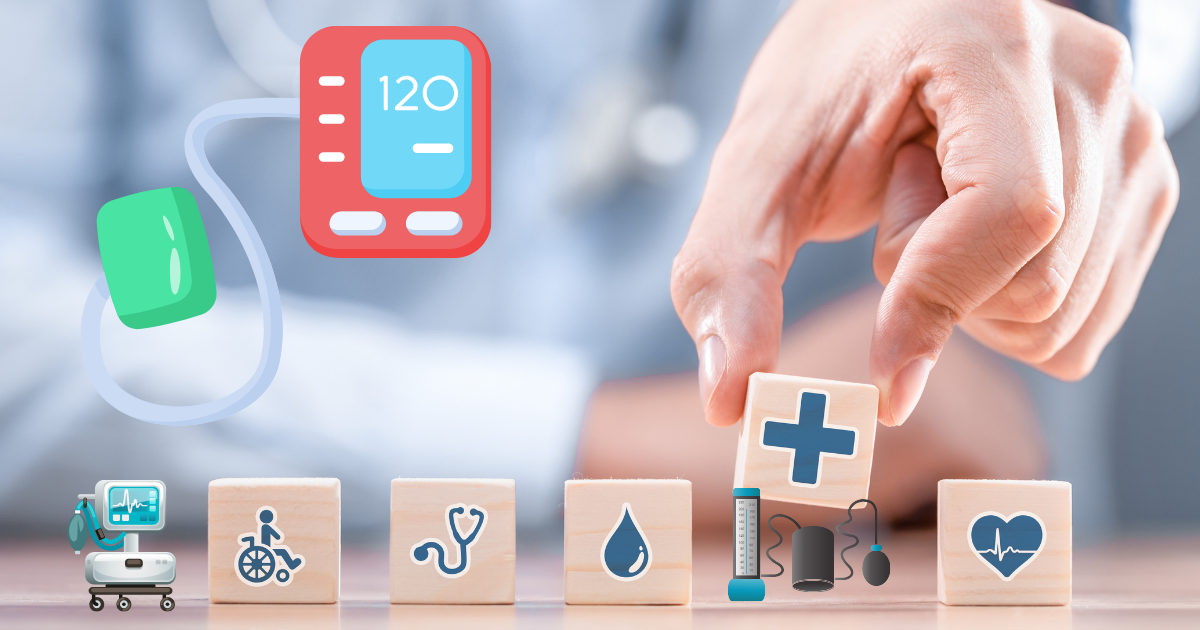As the healthcare industry continues to embrace digital transformation, remote patient monitoring (RPM) devices have become increasingly vital. These devices offer a way to monitor patients’ health conditions outside of traditional clinical settings, providing timely data to healthcare providers and improving patient outcomes. Before diving in, let’s take a moment to explore the fascinating world of remote patient monitoring devices.
What Are Remote Patient Monitoring Devices?
Remote Patient Monitoring (RPM) devices are a subset of telehealth technology that enables healthcare providers to monitor patients’ health data without requiring the patient to be physically present in a healthcare facility. These devices collect a variety of physiological data, such as heart rate, blood pressure, glucose levels, and more, which can be transmitted to healthcare professionals in real-time. RPM devices play a crucial role in managing chronic diseases, improving patient outcomes, and reducing the burden on healthcare systems.
Key Features of Remote Patient Monitoring Devices
Data Collection
RPM devices are equipped with sensors that measure specific health metrics. Commonly monitored parameters include:
- Heart Rate: Measured by ECG devices or fitness trackers.
- Blood Pressure: Measured by smart blood pressure monitors.
- Blood Glucose: Measured by continuous glucose monitors (CGMs).
- Oxygen Saturation: Measured by pulse oximeters.
- Body Temperature: Measured by digital thermometers.
Data Transmission
These devices typically connect to mobile apps or cloud-based platforms via Bluetooth or Wi-Fi. This connectivity enables:
- Real-Time Data Sharing: Immediate transmission of data to healthcare providers.
- Data Storage: Historical data logging for trend analysis.
Alerts and Notifications: Automated alerts for abnormal readings.
User Interface
RPM devices often come with user-friendly interfaces, either through integrated displays or connected smartphone apps. These interfaces allow patients to:
- View Real-Time Data: Access current health metrics.
- Track Trends: Monitor changes over time.
- Receive Feedback: Get actionable insights or instructions from healthcare providers.
Let we dive deep into “Top 15 Remote Patient Monitoring Devices”
Top 15 Remote Patient Monitoring Devices
Remote patient monitoring (RPM) devices are transforming healthcare by enabling patients to manage their health conditions from home, providing timely data to healthcare providers, and ultimately improving patient outcomes. Here, we take a detailed look at the top 15 RPM devices, highlighting their features, pros, and cons.
1. KardiaMobile by AliveCor
KardiaMobile is an FDA-cleared portable electrocardiogram (ECG) device that allows patients to record their heart rhythm and detect atrial fibrillation (AFib). The device connects to a smartphone app, providing real-time data to both the patient and their healthcare provider. Its ease of use and accuracy make it a popular choice for those with heart conditions.
Pros:
- Accuracy: Provides medical-grade ECG readings.
- Convenience: Small and portable, making it easy to use anywhere.
- Real-time Data: Instant results and sharing with healthcare providers through the app.
Cons:
- Limited Scope: Primarily focuses on heart rhythm, not comprehensive cardiovascular health.
- Battery Life: Needs regular charging.
2. Withings BPM Connect

Withings BPM Connect is a smart blood pressure monitor that provides medical-grade accuracy in measuring blood pressure and heart rate. The device syncs seamlessly with the Health Mate app, allowing patients to track their measurements over time and share them with their healthcare provider. Its portability and simplicity are ideal for at-home monitoring.
Pros:
- Ease of Use: User-friendly interface with clear instructions.
- Connectivity: Syncs with Health Mate app for tracking and sharing data.
- Design: Compact and travel-friendly.
Cons:
- Price: Higher cost compared to some traditional blood pressure monitors.
- App Dependence: Full functionality requires use of the app.
3. Dexcom G6 Continuous Glucose Monitoring System
Designed for people with diabetes, the Dexcom G6 continuously monitors glucose levels and transmits the data to a smartphone or smartwatch. The system includes a sensor placed under the skin, a transmitter, and a display device. It offers real-time glucose readings and customizable alerts, helping patients manage their blood sugar levels effectively.
Pros:
- Real-time Monitoring: Continuous glucose data with customizable alerts.
- No Fingersticks: Eliminates the need for routine fingersticks.
- Integration: Compatible with various health apps and devices.
Cons:
- Cost: Expensive, especially without insurance coverage.
- Sensor Life: Sensors need to be replaced every 10 days.
4. iHealth No-Touch Forehead Thermometer
The iHealth No-Touch Forehead Thermometer provides an accurate and hygienic way to measure body temperature without physical contact. This is particularly useful during the COVID-19 pandemic. It offers fast readings and syncs with a smartphone app to log temperature trends, making it a valuable tool for monitoring fever in various medical conditions.
Pros:
- Non-Invasive: No contact needed, reducing the risk of cross-contamination.
- Quick Readings: Provides instant results.
- Memory Storage: Stores up to 99 readings.
Cons:
- Accuracy Issues: Can be less accurate if not used correctly.
- Battery Dependent: Requires batteries, which need to be replaced periodically.
5. Fitbit Charge 5
The Fitbit Charge 5 is more than just a fitness tracker; it’s a comprehensive health monitoring device. It tracks heart rate, sleep patterns, oxygen saturation (SpO2), and electrodermal activity (EDA) to provide insights into stress levels. The data can be shared with healthcare providers to help manage chronic conditions like hypertension and sleep apnea.
Pros:
- Multifunctional: Monitors various health metrics.
- User-Friendly App: Easy to navigate and analyze data.
- Battery Life: Long battery life with fast charging.
Cons:
- Subscription Cost: Some features require a Fitbit Premium subscription.
Accuracy Variations: Fitness tracking may be less accurate compared to specialized medical devices.
6. Omron HeartGuide
Omron HeartGuide is a wearable blood pressure monitor integrated into a smartwatch. It provides clinically accurate blood pressure readings and tracks physical activity and sleep. The device syncs with a smartphone app, allowing users to share data with their healthcare providers, making it easier to manage hypertension and other cardiovascular conditions.
Pros:
- Convenience: Wearable and easy to use regularly.
- Clinical Accuracy: Provides accurate blood pressure readings.
- Additional Features: Tracks physical activity and sleep.
Cons:
- Price: High cost compared to traditional blood pressure monitors.
- Size: Bulky compared to other smartwatches.
7. Philips Dream Station Go
The Philips DreamStation Go is a portable continuous positive airway pressure (CPAP) machine designed for individuals with sleep apnea. It is compact and travel-friendly, offering advanced monitoring features that track usage and mask fit. The data can be shared with healthcare providers to ensure effective treatment.
Pros:
- Portability: Compact and ideal for travel.
- Advanced Features: Tracks usage and mask fit.
- Quiet Operation: Minimal noise during use.
Cons:
- Cost: Expensive initial investment.
- Accessories: Additional cost for necessary accessories like travel cases.
8. Apple Watch Series 7
The Apple Watch Series 7 is a multifunctional device that includes advanced health monitoring features. It can perform ECGs, measure blood oxygen levels, track heart rate, and detect falls. The watch integrates with the Apple Health app, making it easy for users to share their health data with medical professionals.
Pros:
- Comprehensive Monitoring: Tracks multiple health metrics.
- Integration: Works seamlessly with Apple Health app.
- Emergency Features: Fall detection and emergency SOS.
Cons:
- Battery Life: Requires daily charging.
- Cost: High initial cost and additional features may require subscriptions.
9. QardioArm Wireless Blood Pressure Monitor
The QardioArm is a smart blood pressure monitor that offers accurate measurements and a user-friendly experience. It connects to a smartphone app, allowing users to monitor their blood pressure trends over time. The device’s portability and ease of use make it a popular choice for remote monitoring.
Pros:
- Ease of Use: Simple setup and operation.
- Portability: Compact and easy to carry.
- Connectivity: Syncs with a smartphone app for tracking data.
Cons:
- Price: More expensive than some basic models.
- App Reliance: Some features only accessible via the app.
10. Masimo MightySat Fingertip Pulse Oximeter
The Masimo MightySat is a fingertip pulse oximeter that measures oxygen saturation, pulse rate, and perfusion index. It uses advanced signal processing technology to provide accurate readings even in challenging conditions, such as during motion or low blood flow. The data can be shared with healthcare providers via a smartphone app.
Pros:
- Accuracy: Reliable readings even in challenging conditions.
- Portability: Small and easy to use on the go.
- App Integration: Data can be shared with healthcare providers via a smartphone app.
Cons:
- Cost: Higher price point compared to basic oximeters.
- Battery Life: Frequent use can drain the battery quickly.
11. Tytocare TytoHome Medical Exam Kit
The TytoHome Medical Exam Kit allows patients to conduct comprehensive medical exams at home, including heart and lung sounds, throat and ear images, and body temperature. The data is transmitted to a healthcare provider for diagnosis and treatment. This device is particularly useful for telehealth consultations, reducing the need for in-person visits.
Pros:
- Comprehensive: Covers various examinations like heart, lung, throat, and ears.
- Telehealth Integration: Ideal for remote consultations.
- User-Friendly: Designed for easy home use.
Cons:
- Price: High initial cost.
- Training Required: Users may need time to learn how to use it effectively.
12. Biobeat Remote Patient Monitoring Platform
Biobeat offers a comprehensive remote patient monitoring platform that includes a wearable chest monitor and a smartwatch. These devices measure a wide range of vital signs, including blood pressure, heart rate, respiratory rate, and oxygen saturation. The data is transmitted to a cloud-based platform where healthcare providers can monitor patients in real time.
Pros:
- Real-Time Monitoring: Continuous data transmission to healthcare providers.
- Comprehensive Metrics: Tracks a wide range of vital signs.
- Ease of Use: Comfortable wearable design.
Cons:
- Cost: High initial investment.
- Data Privacy: Concerns about the security of transmitted data.
13. Garmin Venu 2
The Garmin Venu 2 is a fitness and health smartwatch that offers extensive health monitoring features, including heart rate tracking, respiration rate, stress monitoring, and sleep analysis. It also includes a Pulse Ox sensor to measure blood oxygen levels. The data can be shared with healthcare providers through the Garmin Connect app.
Pros:
- Comprehensive Tracking: Monitors heart rate, respiration, stress, sleep, and blood oxygen levels.
- Battery Life: Long-lasting battery.
- Durability: Robust and water-resistant design.
Cons:
- Price: Higher cost compared to other fitness trackers.
- Complexity: May be overwhelming for users looking for basic monitoring.
14. Welch Allyn Home Blood Pressure Monitor
The Welch Allyn Home Blood Pressure Monitor provides accurate blood pressure readings and integrates with a smartphone app to track and share data with healthcare providers. Its user-friendly design and clinical accuracy make it a trusted device for managing hypertension remotely.
Pros:
- Clinical Accuracy: Trusted for reliable measurements.
- User-Friendly: Easy to set up and use.
- App Integration: Allows for data sharing with healthcare providers.
Cons:
- Price: More expensive than basic monitors.
- Battery Dependency: Requires batteries which need regular replacement.
15. Propeller Health Smart Inhaler
The Propeller Health Smart Inhaler is designed for patients with asthma and chronic obstructive pulmonary disease (COPD). It attaches to the patient’s existing inhaler and tracks medication usage and symptoms. The data is transmitted to a smartphone app, helping patients and healthcare providers manage respiratory conditions more effectively.
Pros:
- Medication Management: Helps track and manage inhaler usage.
- Data Sharing: Shares usage data with healthcare providers.
- Symptom Tracking: Monitors respiratory symptoms and triggers.
Cons:
- Cost: High initial cost and potential subscription fees.
- Device Attachment: Bulky attachment to existing inhalers.
Conclusion
Remote patient monitoring devices are transforming healthcare by enabling continuous monitoring and timely interventions. These 15 devices represent some of the best in the market, offering innovative solutions for managing chronic conditions, improving patient outcomes, and enhancing the overall healthcare experience. As technology continues to advance, we can expect even more sophisticated and integrated RPM solutions that will further revolutionize patient care
FAQs
1. What are remote patient monitoring devices?
Remote Patient Monitoring (RPM) devices are technologies that allow healthcare providers to monitor patients’ health data from a distance. These devices collect various health metrics such as heart rate, blood pressure, glucose levels, and more, and transmit this data to healthcare professionals in real-time.
2. What is the most commonly used monitoring device?
Blood pressure monitors and glucose monitors are among the most commonly used monitoring devices. Blood pressure monitors are widely used for hypertension management, while glucose monitors, especially continuous glucose monitors (CGMs), are essential for diabetes management
3. What are the best patient monitors?
The best patient monitors vary depending on the specific health metrics being tracked. Some top-rated patient monitors include:
- KardiaMobile by AliveCor (ECG monitor)
- Withings BPM Connect (Blood pressure monitor)
- Dexcom G6 (Continuous glucose monitor)
- Fitbit Charge 5 (General health and fitness monitor)
- Masimo MightySat (Pulse oximeter)
4. Which device is used for monitoring a patient?
The choice of device for monitoring a patient depends on the health condition being monitored. Common devices include:
- Blood pressure monitors for hypertension.
- Glucose monitors for diabetes.
- Pulse oximeters for oxygen saturation.
- ECG devices for heart rhythm.
- Thermometers for body temperature.
5. What are the best RPM companies?
Some of the leading companies in the RPM space include:
- AliveCor: Known for KardiaMobile ECG monitors.
- Withings: Known for their range of health monitoring devices including blood pressure monitors.
- Dexcom: Leaders in continuous glucose monitoring systems.
- Omron: Renowned for their blood pressure monitors.
- Masimo: Known for their pulse oximeters.
6. Which type of monitor is most common in hospitals?
In hospitals, vital signs monitors are the most common type of monitoring devices. These typically include devices that monitor heart rate, blood pressure, respiratory rate, and oxygen saturation. Multi-parameter monitors that combine these functionalities are widely used in critical care and intensive care units.
7. What are the three main types of monitoring?
The three main types of monitoring in healthcare include:
- Vital Signs Monitoring: Tracking key physiological metrics like heart rate, blood pressure, and respiratory rate.
- Diagnostic Monitoring: Using devices such as ECGs, glucose monitors, and imaging tools to diagnose conditions.
- Therapeutic Monitoring: Monitoring the effects of treatments, such as using a CPAP machine for sleep apnea or medication adherence trackers.

